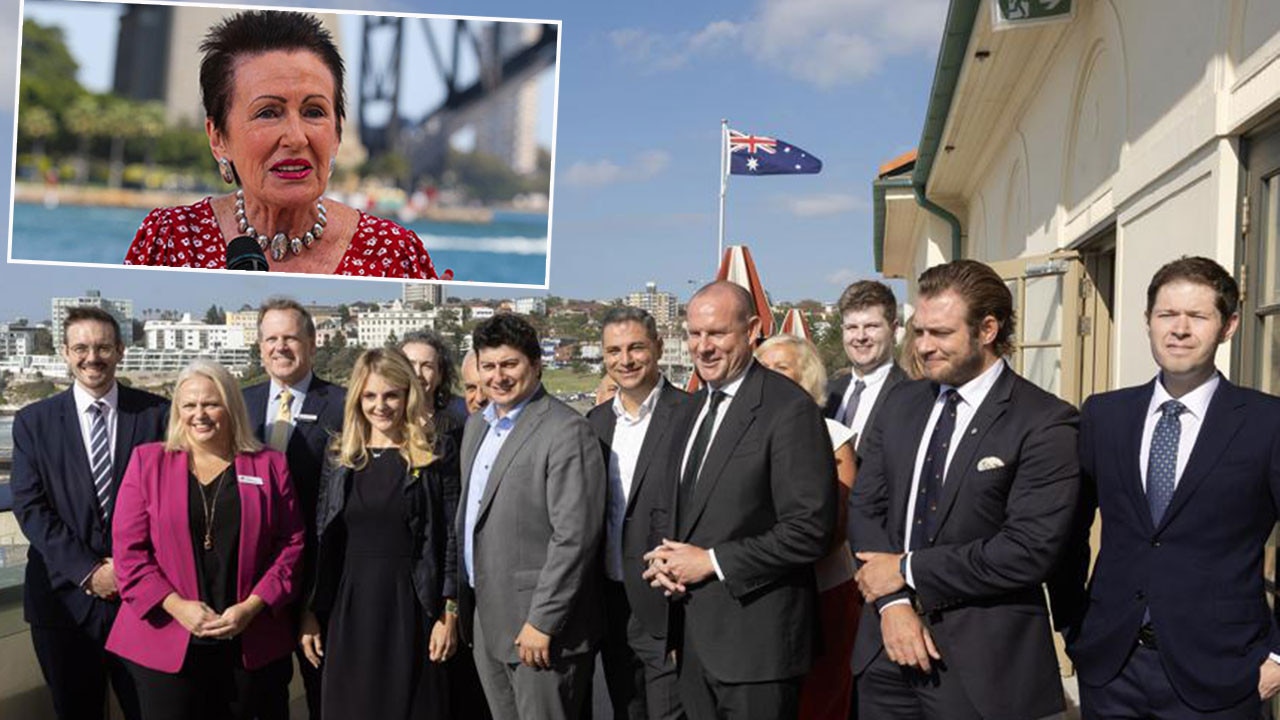The great river run: The collapse of the Brewarrina Weir
Where there was once a waterway with an abundance of freshwater fish, the riverbed is simply a stretch of sand-strewn desert. One of the key tourist attractions in Bourke, the paddleboat Jandra, has been moored in the centre of the Darling which is hardly more than a puddle.
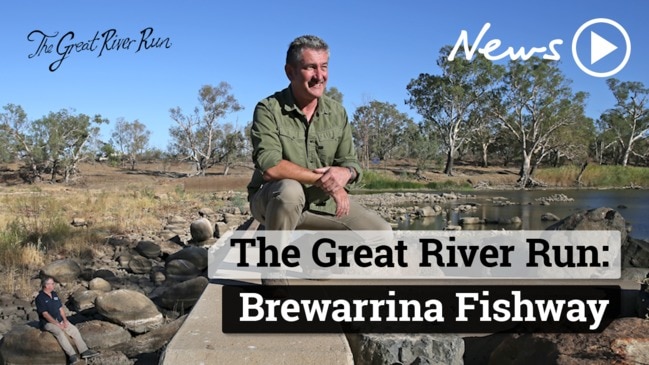
NSW
Don't miss out on the headlines from NSW. Followed categories will be added to My News.
- The Great River Run: Part 1, The Big Picture
- The Great River Run: Part 2, The Drought
- The Darling River Run Part 3: The People
Brewarrina lies on the normally fast flowing Barwon River which ultimately becomes the Darling between here and Bourke.
‘Bre’ as it’s known to the locals, was the uppermost reach for paddle-steamers during the heady days of the river trade along the Darling River.
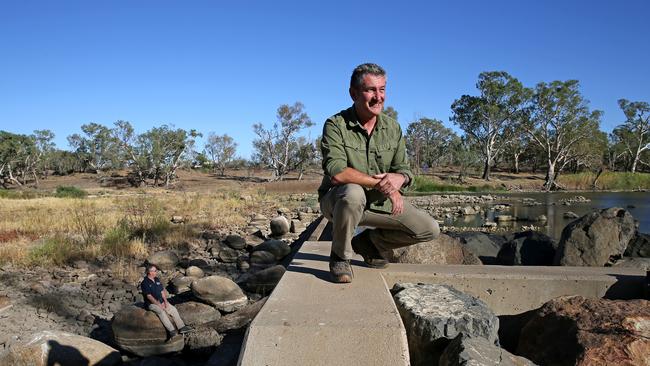
In 1860 a riverboat named the Gemini successfully navigated its way up the Darling and into the Barwon River to eventually reach Brewarrina, opening up the region to a trade route never thought possible, allowing wool to be shipped all the way to Adelaide.
The Brewarrina Weir traversing the Barwon possesses what is termed a fish ladder — an ingenious placement of tiered rocks that allow fish to work their way upstream by jumping from one pool to another. The idea is derived from Brewarrina’s ancient aboriginal fish traps — a series of pools and weirs constructed by tribespeople 40,000 years ago as an effective method to ensnare fish.
But not now — the upstream side of the weir is barely ankle-deep, the downstream side is completely bone dry. Where there was once a waterway with an abundance of freshwater fish, the riverbed is simply a stretch of sand-strewn desert.
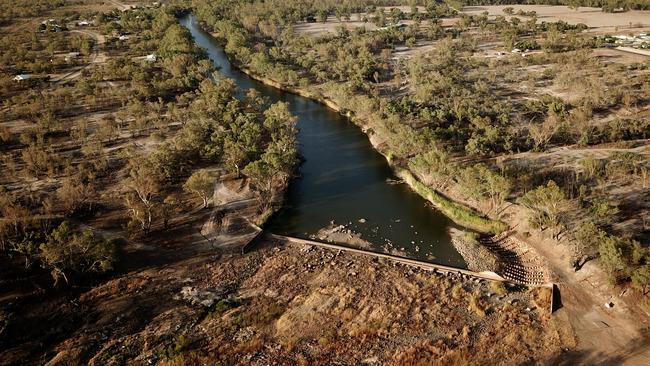
BREWARRINA to BOURKE
It’s a tricky drive to try and locate the junction where the Culgoa and Barwon rivers meet to become the mighty Darling.
We’re now between Brewarrina and Bourke heading way out to the middle of absolutely nowhere and we haven’t passed a car or seen another human being for hours.
But the GPS eventually zeros us in on what is suddenly revealed as a sobering — and particularly harrowing view — it is a scene of heartbreaking devastation.
Below us is the gaping confluence of what should be three mighty rivers, but is in reality a junction of three vast, bone-dry troughs that run to the horizon. We climb down the near-vertical sides, the floor of this staggeringly-sized ditch nothing more than cracked, sun-blasted earth.
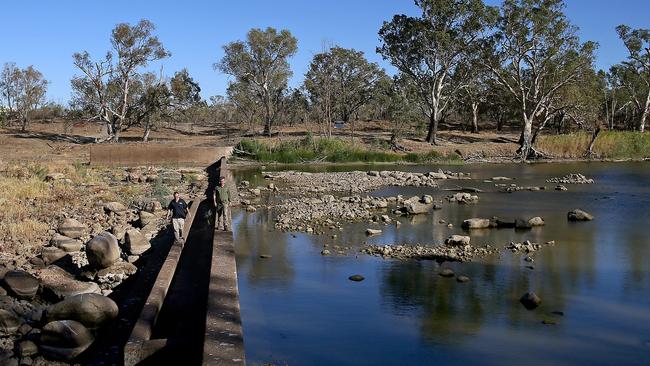
I find the lifeless body of a kangaroo that’s perished while struggling in the greasy, quicksand-like clay at the bottom. The ‘roo is still soft, its fur fresh — this animal would have taken its last breath hardly two hours earlier.
The river trade petered out for the port of Bourke in 1931. For sixty years this outpost on a bend in the Darling River had been a transport hub, paddle steamers hauling some 40,000 bales of wool a year down the Darling to the Port of Goolwa at mouth of the Murray River. Indeed, the river is the keystone for the town’s proud heritage — Bourke is still home to the furthest inland maritime court in the world.
Yet the appalling state of the Darling is a perpetual affliction for the people of Bourke — the relentless drought and the fall of the river has brought the town to its knees. One of the key tourist attractions, the paddleboat Jandra has been moored in the centre of the Darling which is hardly more than a puddle — just enough water to keep the ship from being beached.
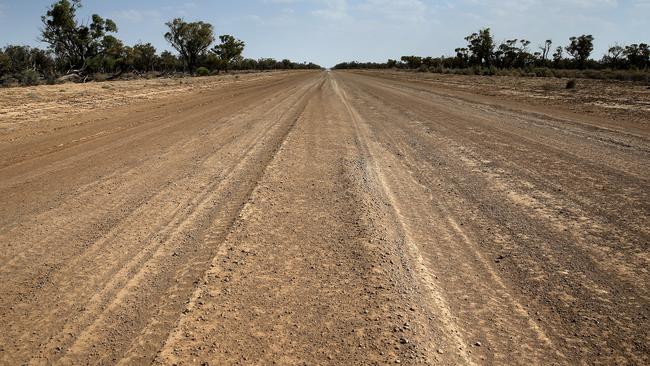
Many locals blame the irrigators further north for hoarding water and thus cutting off supply — those who live along the river’s edge are confronted daily with the burning reminder their river has disappeared.
They don’t hide their anger.
“We bought a house on the river and now we have no river” an angry resident who declined to be named tells me. I explain to her we’ve recently visited the irrigation cotton farm Cubbie Station — where clearly, even the mention of the name makes her bristle.
“I’ll bet they’d have been watching your every move” she says. “It’d be like walking around in North Korea.”

